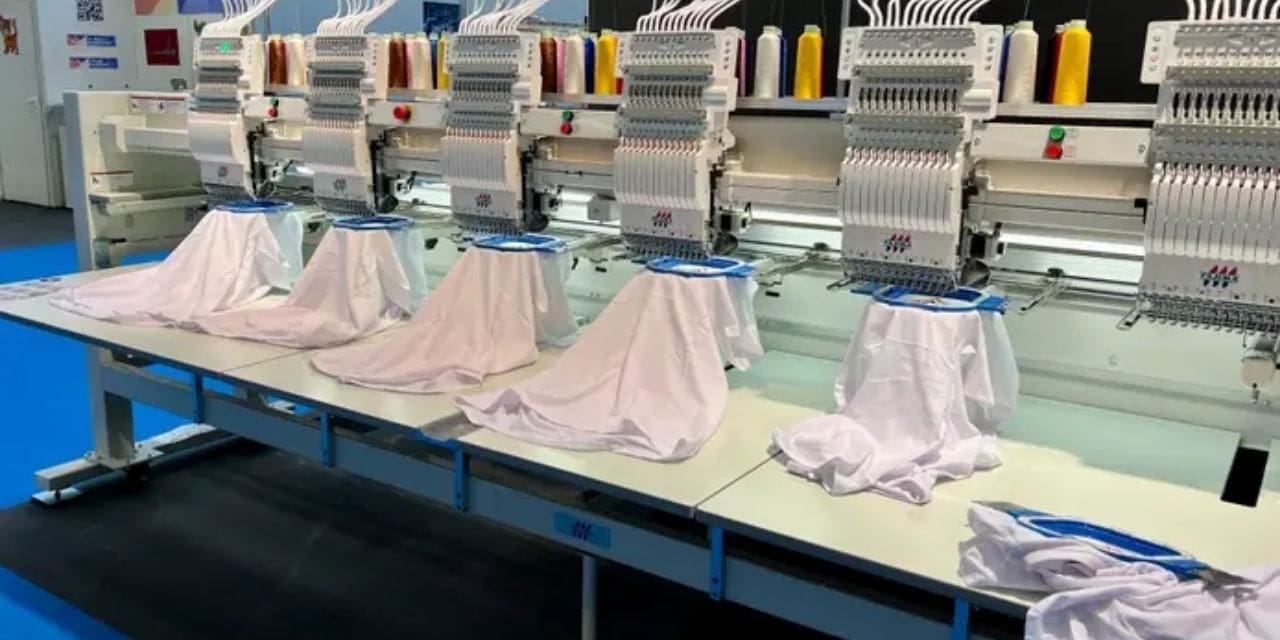European manufacturers of equipment ranging from embroidery machines to textile cutters are seeing a growing interest in nearshoring from apparel producers. Strained global supply chains are prompting some to bring back production closer to Europe.
“People are looking for capacity close by. Factories around Europe, North Africa and in the Middle East are trying to build up and modernise their capacities,” said Artur Kitta, head of sales for Europe and Africa at Dürkopp Adler GmbH.
The sewing machine manufacturer from Bielefeld, Germany, is itself surprised by demand from the garment sector in and around Europe, as well as the Middle East, which currently even exceeds that of the tech sector, Kitta said at the Texprocess trade fair in Frankfurt at the end of June.
More local and flexible
Since the beginning of the pandemic, supply chains have been in turmoil and the situation hasn’t calmed down so far. Shipping container prices remain elevated and fashion companies are struggling with the uncertainty of how much merchandise to pre-produce when speedy replenishment and delivery are no longer guaranteed. These uncertainties are prompting some to look into producing closer to demand and also with more flexibility – that is, quickly and in smaller quantities.
These developments emerged even before the outbreak of the pandemic, but have gained in urgency again over the past two years.
“In the fashion sector, the trend towards made-to-measure, that is, the individualisation of garment sizes, continues unabated,” said Rolf Köppel, Segment Manager Textiles at the cutting machine manufacturer Zünd Systemtechnik AG.
At the same time, there is a trend towards nearshoring, which can be explained by the unstable supply chains between Asia and Europe. Many companies are looking for technologies that enable them to produce more efficiently and automatically in Europe or America, Köppel said. “Such trends also trigger corresponding investments in digital cutting technology.”
Technical innovations are reducing costs
The nearshoring is facilitated by technical innovations. Increasing automation makes it possible to produce faster and with fewer workers. Machine builders are also advertising this fact.
The machines from Zünd from Altstätten, Switzerland, are an example: the D3 cutter has two heads to cut the laid-on textiles and can thus finish more in the same amount of time. The cutter automatically supplies the rolls of fabric, while the cutting heads control the textiles with the help of a robot. In the apparel sector, it is mainly sportswear manufacturers and companies specialising in made-to-measure that use the single-layer cutters from Zünd. They are more precise and can handle and cut a wide variety of textiles.
The machines from the Krefeld-based company ZSK Stickmaschinen GmbH are also becoming more efficient. At Texprocess, an embroidery machine is on display that can stitch thick sewing threads and thin embroidery threads in one single process. One machine has thus replaced the two that were previously necessary. The stand also features a prototype that will not be released until the end of the year: an embroidery machine whose patented technology allows 2,000 stitches a minute, twice the current market standard.
“This means we can produce things faster in Germany and no longer have to send them to Asia,” said Frank Giessmann, Sales Director USA, at ZSK Embroidery Machines. “We have a lot of customers coming back now, from Turkey or Asia, to Germany.” But he did not want to reveal more about the names of the manufacturers in conversation, yet.

